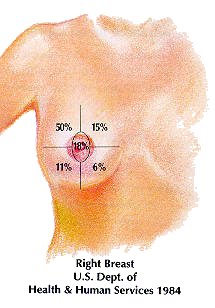Benign and malignant breast lumps can originate from a variety of sources. They may develop from non-cancerous conditions like cysts, fibroadenomas, or papillomas, or can be a manifestation of breast cancer, as malignant cells multiply to form a tumor.
Identifying the cause of a concerning breast lump typically involves a physical exam, imaging tests, and biopsy to distinguish between harmless growths and potentially cancerous ones requiring treatment. Understanding the many types of breast lumps and their appearances will help you to conduct an informed breast self-exam and reach out for help if you notice anything abnormal.
Benign Breast Lumps
Although any lump formed by body cells may be referred to technically as a tumor, not all tumors are malignant, or cancerous. Most breast lumps – 80% of those biopsied – are benign (non-cancerous). While most breast lumps are benign, non-cancerous cysts or tumors, they may require surgical removal to prevent their interfering with normal breast function and surrounding tissue.
The most common benign breast conditions that produce lumps include:
Fibrocystic Changes
Fibrocystic changes are an exaggerated response of breast tissue to changes of ovarian hormones.
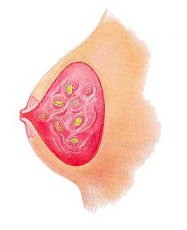
This is not a disease, but rather a benign, non-cancerous condition affecting 50-60% of all women. In these cases, fibrous breast tissue, mammary glands, and ducts overreact to the normal hormones produced during ovulation. This results in the development of fibrous lumps or numerous small cysts, which are lumpy, fluid-filled sacs or “pockets.”
Here’s what you need to know about fibrocystic changes:
- They are the most common non-cancerous breast condition
- They typically impact women between the ages of 20 and 50
- They are unusual after menopause, unless a woman is taking hormones
- The size and tenderness of Fibrocystic lumps usually increase before menstruation and decrease after the period ends
- Medical opinion is still divided over whether Fibrocystic disease increases the risk of breast cancer
Some research indicates that the chemical called methylxanthines, found in coffee, tea, cola, chocolate and some diet and cold medication, seems to promote the growth of Fibrocystic lumps.
Fibroadenomas
Fibroadenomas are benign tumors characterized as solid lumps of fibrous and glandular tissue.
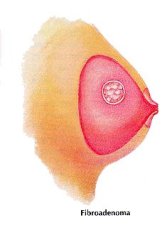
Here’s what you need to know about fibroadenomas:
- They occur most frequently in women between ages 18 and 35
- They account for nearly all breast tumors in women under 25
- They are not typically tender, although tenderness may be felt just before menstruation
- They are generally movable when palpated, or rolled with pads of the fingers
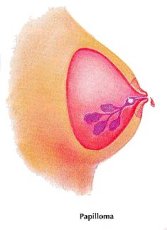
Papillomas
Papillomas are small, wart-like lumps that grow in the lining of the mammary ducts, near the nipple. The often result in a discharge, either clear or bloody, from the nipple.
Here’s what you need to know about papillomas:
- They are typically asymptomatic, but may cause swelling and nipple discharge
- They are often found through mammogram
- The small masses may roll easily under the skin when touched
Malignant Breast Lumps
Malignant breast tumors are cancerous growths that develop in breast tissue. If they are not detected and treated early, malignant tumors will continue to grow, invading and destroying adjacent normal tissue.
If unchecked, cancer cells in these types of breast lumps will:
- First, spread to surrounding lymph nodes
- Then, metastasize and break away from the tumor
- Continue to spread through the lymph system and bloodstream, to other areas of the body
When cancer cells metastasize and spread through the body, breast cancer becomes deadly and chances of cure are far lower (one-half or less) than in the early, localized stage.
Most malignant tumors appear first as single, hard lumps or thickenings that are frequently, but not always, painless.
Some breast cancers, however, may first announce their presence with:
- nipple secretions
- changes in the nipple’s appearance
- nipple tenderness
- dimpling or puckering of the skin
Malignant breast lumps generally appear in the following places:
- 50% appear in the outer quadrant of the breast, extending into the armpit, where tissue is thicker than elsewhere
- 15% occur in the nipple area
- 11% appear in the lower out quadrant
- 6% occur in the lower inner quadrant
Any change in size, shape, or texture of the nipple that occurs in one breast only is more dangerous than if such changes happen simultaneously in the same area of both breasts.
The most common malignant breast conditions that produce lumps include:
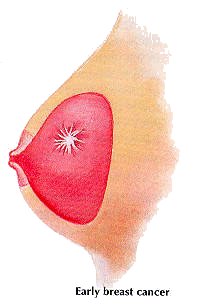
Early Breast Cancer
Early breast cancer is confined to the breast only. An “early” tumor is defined as an inch or less in size and may have been growing for as long as eight years before it is large enough to be detected.
The five-year survival rate for woman whose breast cancers are treated in the early, localized stage is 96%. Regular breast self-exams combined with your doctor’s or other healthcare professional’s periodic breast examinations and mammograms will greatly increase your chances of recognizing early breast cancers.
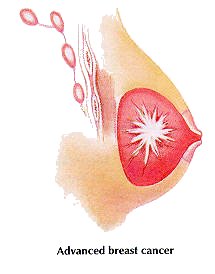 Advanced Breast Cancer
Advanced Breast Cancer
Advanced breast cancer is a tumor that has spread from the breast to involve lymph nodes in the armpit, neck or chest. Once these areas are affected, the five-year survival rate drops to 73 percent or less.
According to the Centers for Disease Control and Prevention (CDC), an estimated 42,000 women and 500 men in the United States die each year from breast cancer, in spite of treatments including surgical removal of the cancerous breast, lymph nodes, and (in extreme cases) ovaries. Many of these deaths could be averted if more women would examine their own breasts and consult their doctors promptly in case of suspicious findings.
Disseminated Breast Cancer
This advanced tumor has grown to affect not only the adjacent lymph nodes, but also, through metastasis, other parts of the body including the bones, liver, lungs, and even the brain. When treatment does not begin until cancer has disseminated, the five-year survival rate is exceedingly low.
Remember that, although you can discover your own breast lumps, only your doctor can determine accurately whether a lump is benign or malignant. The important thing is to be diligent and thorough in your monthly breast self-exam, and to report any abnormality.



